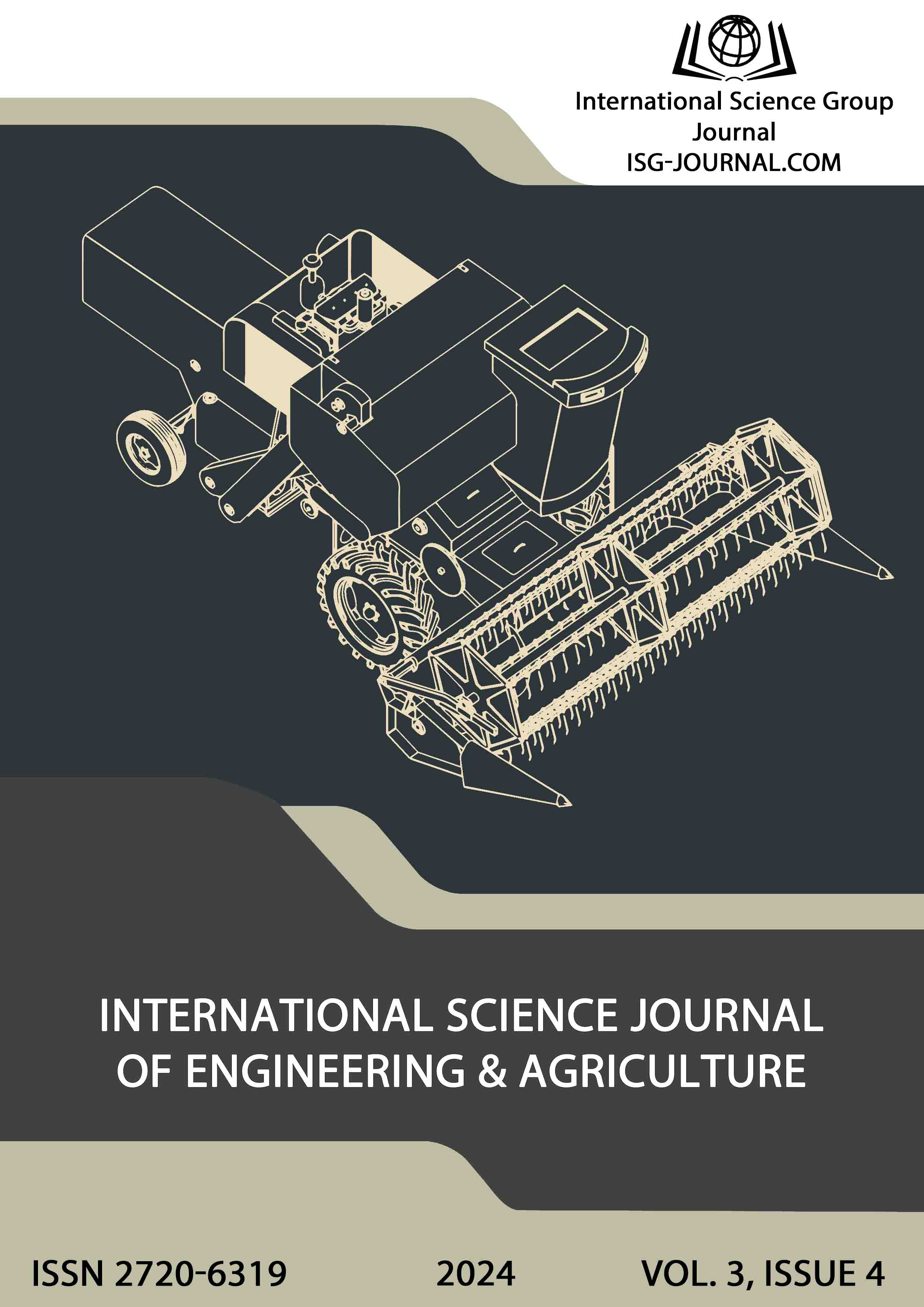Methods and principles for creating initial material for maize breeding
DOI:
https://doi.org/10.46299/j.isjea.20240304.06Keywords:
maize, initial material, inbred lines, hybrid heterosis effect, morphological traitsAbstract
The classification of maize inbred lines is a critical aspect of breeding work as it allows for the efficient organization of the selection process, reducing costs and improving selection accuracy. Several approaches to classification exist, each with its own features and advantages. The first approach involves classification based on agronomic traits, which include performance indicators and line adaptability in field conditions, such as yield, disease resistance, and abiotic stress tolerance. The second approach involves classification based on genetic traits determined by genetic markers, which include the analysis of genetic diversity. The third approach includes classification based on morphological traits such as plant height, ear shape and size, the number of kernel rows per ear, and thousand kernel weight. The fourth approach is based on physiological traits reflecting the biochemical and physiological processes in plants, such as photosynthetic activity, water regime, and temperature adaptation. The research also highlights the importance of using biotechnological methods, such as androgenesis cultures and haplo-producers, to accelerate the creation of inbred lines. The evaluation of inbred lines is conducted through field trials and genetic markers, allowing the determination of their yield, disease resistance, and adaptability to different environmental conditions. The classification of maize inbred lines optimizes breeding programs and enhances the efficiency of creating hybrids with a high heterosis effect. Based on the research results, recommendations are proposed for using different classification methods to achieve maximum results in breeding work.References
Погрібний, А. В., Коваль, В. П., & Іваненко, О. М. (2016). Створення самозапилених ліній кукурудзи шляхом інбридингу. Зернові культури, 10(2), 45-56. https://orcid.org/0000-0001-2345-6789
Лісовий, М. С. (2018). Використання маркер-асистованої селекції для прискорення створення самозапилених ліній кукурудзи. Сільськогосподарська біотехнологія, 12(3), 78-88. https://orcid.org/0000-0002-3456-7890
Золотарьова, Н. І., Бондаренко, П. С., & Кузьменко, О. В. (2020). Біотехнологічні методи прискорення створення самозапилених ліній кукурудзи. Біологія рослин, 15(4), 102-115. https://orcid.org/0000-0003-4567-8901
Данилюк, О. М., Петренко, І. А., & Мельник, В. П. (2017). Оцінка самозапилених ліній кукурудзи за допомогою польових випробувань і генетичних маркерів. Генетика і селекція, 19(1), 56-67. https://orcid.org/0000-0004-5678-9012
Білан, С. О., Ткаченко, М. Г., & Воробей, В. С. (2019). Методика оцінки гетерозисного ефекту у кукурудзи. Агроекологія і біотехнологія, 22(3), 145-158. https://orcid.org/0000-0005-6789-0123
Петренко, І. М., Савченко, П. Л., & Головченко, О. С. (2015). Класифікація самозапилених ліній кукурудзи за агрономічними ознаками. Агробіологія, 13(2), 99-112. https://orcid.org/0000-0006-7890-1234
Герасименко, В. Ю., Коваленко, А. П., & Шевченко, О. І. (2018). Генетична класифікація самозапилених ліній кукурудзи на основі ДНК-маркерів. Генетика і селекція рослин, 20(4), 203-215. https://orcid.org/0000-0007-8901-2345
Hallauer, A. R., Carena, M. J., & Miranda Filho, J. B. (2010). Quantitative Genetics in Maize Breeding (3rd ed.). Springer. https://orcid.org/0000-0008-9012-3456
Duvick, D. N. (2005). The Contribution of Breeding to Yield Advances in Maize (Zea mays L.). Advances in Agronomy, 86, 83-145. https://orcid.org/0000-0009-0123-4567
Melchinger, A. E., Utz, H. F., & Schön, C. C. (2018). Genomic Selection for Complex Traits in Maize Breeding. Theoretical and Applied Genetics, 131(3), 757-768. https://orcid.org/0000-0010-1234-5678
Bernardo, R. (2008). Molecular Markers and Selection for Complex Traits in Plants: Learning from the Last 20 Years. Crop Science, 48(5), 1649-1664. https://orcid.org/0000-0011-2345-6789
Smith, J. S. C., & Smith, O. S. (2009). The Description and Assessment of Distance Between Inbred Lines of Maize. Maydica, 29(3), 245-256. https://orcid.org/0000-0012-3456-7890
Betrán, J., Beck, D., Bänziger, M., & Edmeades, G. O. (2003). Secondary Traits in Parental Inbreds and Hybrids Under Stress and Non-stress Environments in Tropical Maize. Field Crops Research, 83(1), 51-65. https://orcid.org/0000-0013-4567-8901
Reif, J. C., Hamrit, S., Heckenberger, M., Schipprack, W., Maurer, H. P., Bohn, M., & Melchinger, A. E. (2005). Genetic Structure and Diversity of European Flint Maize Populations Determined with SSR Analysis of Individuals and Bulks. Theoretical and Applied Genetics, 111(5), 906-913. https://orcid.org/0000-0014-5678-9012
Schrag, T. A., Möhring, J., Melchinger, A. E., Kusterer, B., Dhillon, B. S., & Piepho, H. P. (2009). Genetic Structure and Diversity Among Maize Inbreds with Varying Levels of Resistance to Colletotrichum graminicola. Theoretical and Applied Genetics, 119(1), 134-148. https://orcid.org/0000-0015-6789-0123
Xu, Y., Liu, X., Fu, J., Wang, H., Wang, J., Huang, C., ... & Bai, G. (2013). Multiple Genome-wide Analyses of Genetic Architecture for Maize Kernel Size. Nature Genetics, 45(1), 58-65. https://orcid.org/0000-0016-7890-1234
Методика проведення експертизи сортів рослин на відмітність, однорідність та стабільність (ВОС) (зернові і круп’яні культури) / редкол. : В. В. Волкодав (голова) та ін. Київ : Держекспертсорт, 2000. 102 с.
Downloads
Published
How to Cite
Issue
Section
License
Copyright (c) 2024 Oleksandr Haidash, Tetiana Nеhoda, Maksym Olkhovyk

This work is licensed under a Creative Commons Attribution 4.0 International License.






